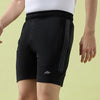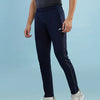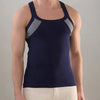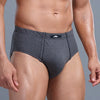How to Measure Vest Size for the Perfect Fit: A Complete Guide
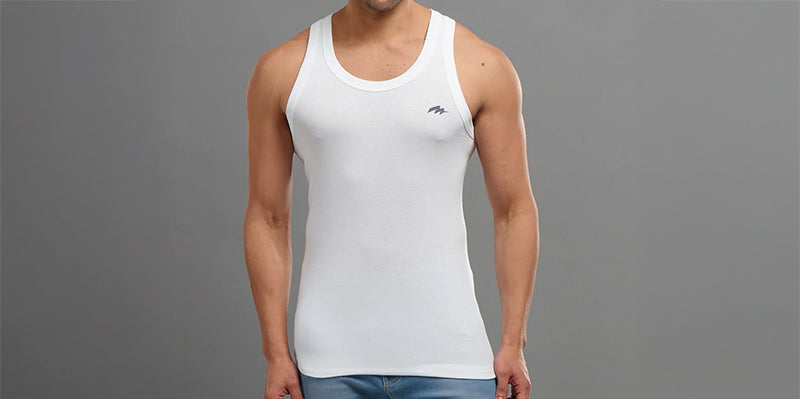
Introduction
Vests, also known as inner vests or undershirts, are a staple in many men’s wardrobes. These garments serve multiple purposes: they can add an extra layer of warmth, absorb perspiration, improve the fit of outer clothing, and contribute to overall comfort throughout the day. With such important functions, choosing the right vest size is not merely a matter of preference but one of necessity. If you’ve found yourself wondering how to measure vest size accurately, this complete guide will provide all the answers.
Why the Right Vest Size Matters
Wearing a vest that fits correctly can make a substantial difference in both comfort and appearance. Here are several reasons why getting the right fit is essential:
-
Comfort
: A vest that fits well won’t feel too tight or too loose. It should move naturally with your body and sit comfortably throughout the day. -
Appearance
: A properly sized vest lies smoothly against the skin, eliminating visible lines or bulges under shirts. It contributes to a polished, put-together look. -
Functionality
: Inner vests act as a barrier between your skin and outer garments, absorbing sweat and helping to regulate temperature. A poor fit compromises these functions. -
Confidence
: Wearing clothing that fits well boosts confidence. A well-fitted vest makes you feel secure and ready to take on the day.
In contrast, a vest that is too small may dig into the skin, restrict movement, or ride up. One that is too large may bunch up or offer insufficient support.
Understanding Vest Types and Fits
Before diving into how to measure for a vest, it is helpful to understand the various types and fits available. Not all vests are created equal, and the purpose for which you wear a vest will influence which type and fit are best.
-
Classic Fit
: Offers a more relaxed silhouette with ample room around the chest and waist. Ideal for those prioritising comfort. -
Slim Fit
: Designed to contour more closely to the body. Suitable for layering under fitted shirts and suits. -
Compression Fit
: Provides a snug, supportive feel. Often chosen for athletic purposes, these vests can enhance posture and muscle alignment.
Additionally, fabric choices vary, from traditional cotton to moisture-wicking synthetic blends. Each type impacts how the vest fits and feels.
Step-by-Step Guide: How to Measure Vest Size
Accurate measurements are crucial when determining the best size. Here is a detailed step-by-step guide to help you measure vest size at home.
-
Gather Your Tools:
Ensure you have a soft, flexible measuring tape. A mirror or an assistant can help ensure accuracy, especially for shoulder measurements. Keep a pen and paper on hand to record your results. -
Prepare for Measuring: Wear a fitted T-shirt or go shirtless for best results. Avoid taking measurements over bulky clothing, as this can distort accuracy. -
Measure Your Chest:
Stand upright with arms relaxed by your sides. Wrap the tape measure around the fullest part of your chest, typically just under your armpits and across your shoulder blades. Keep the tape level and comfortably snug, not tight. Note the measurement. -
Measure Your Waist:
Identify your natural waistline, usually located just above the navel. Wrap the tape measure around this part of your torso, ensuring it is parallel to the ground and sits snugly against your skin. Measure a normal exhale. -
Measure Shoulder Width (Optional but Useful):
Place the tape measure at the tip of one shoulder and stretch it across your back to the tip of the other shoulder. This measurement is particularly helpful for slim or compression fits. -
Record Measurements:
Write down all measurements clearly in inches or centimetres, depending on the size guide you will be using. Recheck each measurement once for accuracy.
Vests Size Guide
Though each brand may offer slightly different sizing, the table below gives a general indication of standard sizes:
|
Size |
Chest (inches) |
Waist (inches) |
|
S |
34 - 36 |
28 - 30 |
|
M |
38 - 40 |
32 - 34 |
|
L |
42 - 44 |
36 - 38 |
|
XL |
46 - 48 |
40 - 42 |
|
XXL |
50 - 52 |
44 - 46 |
If your chest and waist measurements do not fall within the same category, consider choosing the size that corresponds to the larger of the two for a better overall fit.
Tips for Getting the Perfect Fit
Achieving the ideal vest fit involves more than just taking measurements. Consider the following practical tips:
-
Fit for Purpose
: Choose a vest that suits the primary reason you wear it—be it for exercise, under formal wear, or everyday layering. -
Try Before Buying
: If possible, try on vests in-store to assess comfort and fit. -
Check Fabric Composition
: Vests with added elastane or Lycra will stretch more, offering a snugger fit. -
Pay Attention to Length
: A well-fitting vest should be long enough to tuck in without riding up during movement. -
Move Around
: Raise your arms, twist your torso, and bend over when trying on a vest. These actions help you judge how the vest behaves during typical activities. -
Allow for Shrinkage
: Cotton garments may shrink slightly after the first wash. Consider this when selecting your size.
Benefits Of An Inner Vest
Wearing a men's sleeveless vest beneath outer clothing provides numerous advantages, beyond just absorbing perspiration.
-
Sweat Management
: Vests help manage sweat, protecting shirts and jackets from becoming damp or stained. -
Insulation
: An inner vest adds an additional layer of warmth, making it a reliable companion during cooler months. -
Comfort and Softness
: The soft layer reduces skin friction, especially when wearing stiff or coarse outer fabrics. -
Enhanced Appearance
: A well-fitted vest can make shirts and jumpers drape more smoothly over the body. -
Discreet Coverage
: Light-coloured shirts may become semi-transparent; an inner vest maintains modesty and professional appearance.
Common Sizing Mistakes to Avoid
Even with good intentions, many people make mistakes when selecting a vest size. Avoid the following pitfalls:
-
Guessing Your Size
: Assumptions based on T-shirt size can lead to misfitting vests. Always measure before buying. -
Disregarding Fit Variants
: A size M in a compression vest feels very different from the same size in a classic fit. -
Overlooking Fabric Characteristics
: Some materials are more forgiving than others. Always read fabric labels. -
Ignoring Brand-Specific Charts
: Not all brands use the same sizing standards. Consult each brand's specific chart.
Conclusion
Understanding how to measure vest size is an essential skill that makes a tangible difference to daily comfort and appearance. By following a systematic approach—measuring accurately, consulting brand-specific guides, and choosing the right fit for your purpose—you can eliminate the guesswork and find a vest that suits you perfectly. Whether selecting a basic men’s sleeveless vest for everyday wear or opting for a form-fitting athletic style, proper sizing ensures you feel as good as you look. Take the time to measure carefully, avoid common pitfalls, and invest in quality garments that provide support, comfort, and style every single day.


 Contact Us
Contact Us
